7 Most Notorious Islands & Pirate Strongholds
No renegade can rise to power all by himself. He has followers, and together they are invariably directly or indirectly supported by either the oppressed public or the ambitious government, for their vested interest lies in the outcome from such clandestine patronizing of the otherwise unsolicited outlaws.
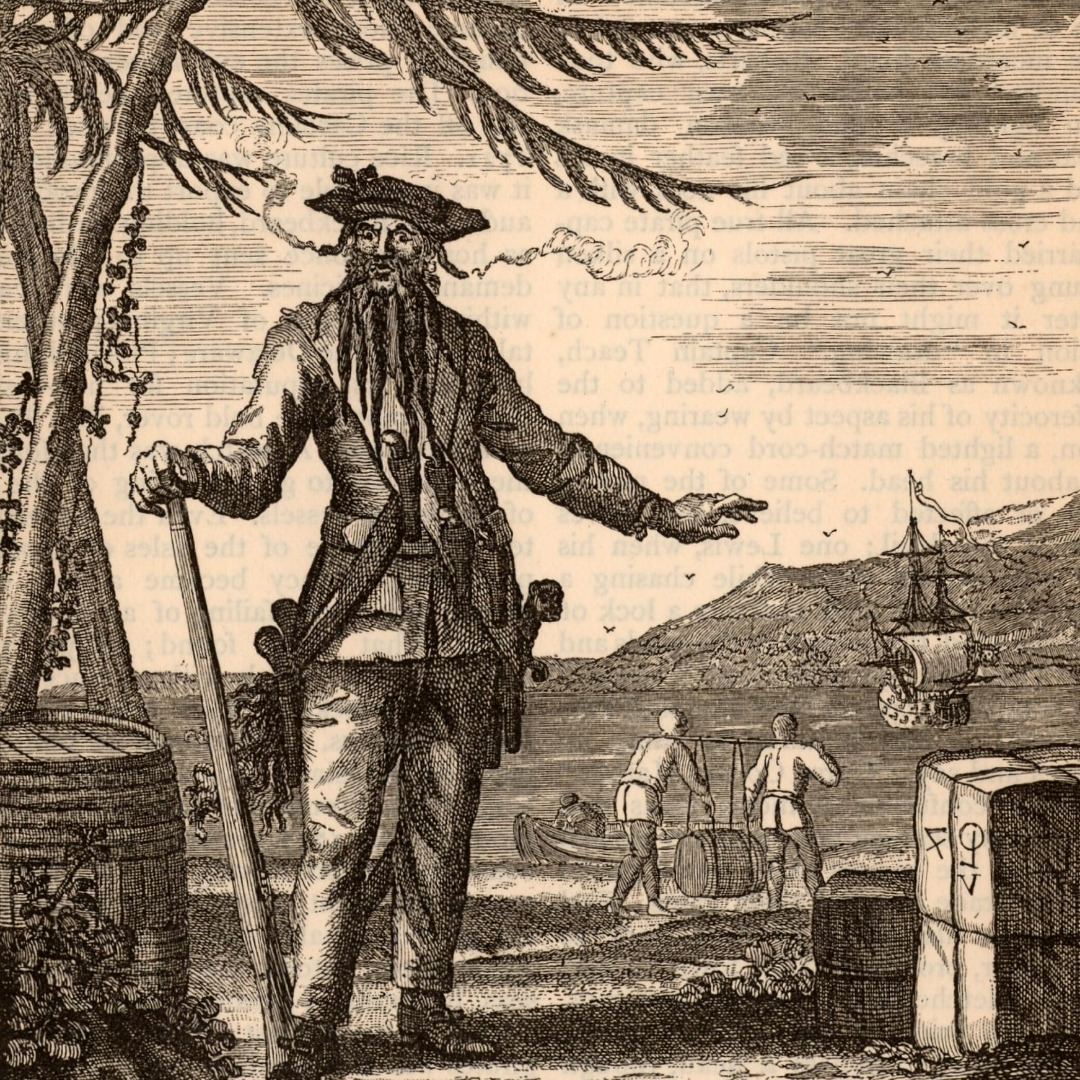
.jpg) Sir Henry Morgan (Welsh: Harri Morgan, c. 1635 – 25 August 1688) was a Welsh privateer, plantation owner, and, later, Lieutenant Governor of Jamaica. From his base in Port Royal, Jamaica, he raided settlements and shipping on the Spanish Main, becoming wealthy. With the prize money from the raids he purchased three large sugar plantations on the island.
Sir Henry Morgan (Welsh: Harri Morgan, c. 1635 – 25 August 1688) was a Welsh privateer, plantation owner, and, later, Lieutenant Governor of Jamaica. From his base in Port Royal, Jamaica, he raided settlements and shipping on the Spanish Main, becoming wealthy. With the prize money from the raids he purchased three large sugar plantations on the island.
Privateers or Pirates always had deep-rooted paradoxical ties with political influences, dynasties or imperial powers. The colonial rulers understood their precarious presence in the sea. They used them to their benefit by enduring some losses but giving them just enough freedom to go about their merry way and pulling the leash when pirates and their clans became overbearing. Privateers or Buccaneers often joined forces with the European monarchs, Asian rulers, international traders alike and undertook many projects to impose supremacy on international waters and trade routes. In return, they enjoyed their cutthroat ways by killing, plundering, marauding, looting the small boats, merchant ships and manipulating the coastal regions. They would sell the loot to the affluent class - in a way part of the gentry who indirectly supported them.
Privateers/Pirates were the formidable mercenaries kept on the fringes by any nation involved in spreading domination across the world. With some support from the respectable societies and by performing their ruthless skills, the pirates had created small and large armies for themselves with fleets of ships and a great deal of ammunition. To operate this kind of army, they, of course, needed a base to strategize, and with that, we come to the topic at hand: the most notorious pirate islands in the world in antiquity. The islands were well camouflaged from unsuspecting sailing ships; they were small islands with smaller communities and a safe ground to conduct nefarious activities. Some islands were even the Switzerland of the pirates.

Pirates have evoked wild imaginations of many writers, readers and entertainers. With popular pirate stories capturing the international markets the otherwise oblivious islands found themselves becoming a point of curiosity for travellers around the world.
.jpg)
1. Île Sainte-Marie
Île Sainte-Marie – or St. Mary is an island off the east coast of Madagascar in the Indian ocean. It could well have been the utopian pirate republic of Libertalia, a fabled free colony started by the pirate Captain James Misson for pirate’s community and slaves set free from captured ships. The island indeed is a veritable paradise with dense vegetation, tall coconut palms trees creating a restful shade on the beautiful long stretches of sandy beaches, pretty coves, bays and caves surrounded with coral reefs. A tropical climate; suitable for spending your days in peace and nights in leisure as the Malagasy music plays in the background.
The idyllic place lulls you into slumber, but in the 17th and 18th century, this was a pirate base harbouring the likes of Adam Baldridge, John Pro, William Kidd, Robert Culliford, Thomas Tew, Olivier Levasseur, Abraham Samuel and Henry Every. Founded because of the proximity to maritime routes for ships coming from West Indies, St. Mary’s pirates led many bloody attacks and plundered Indian ships for their riches and treasures. The ship’s looted cargo had ready buyers ranging from competing merchants, local traders and aristocrats. Many original pirate vessels can be found close to Baie des Forbans along with the pirates’ cemetery close by. Descendants from some of those pirates may still be living there in oblivion today.

Tourism – it is an excellent spot for diving & snorkelling and preferred by the whales for birthing and weaning their young ones. The channel between St. Mary and Madagascar sees many humpback whales. Adventure sports supported by good infrastructure and very good hotels make this island one of the worthy travel destinations.
2. Tortuga Island
Tortuga Island is a Caribbean island and was one of the most infamous havens for pirates and privateers. The first European to arrive here was Christopher Columbus and his exterminating party in 1492. Till 1625 Tortula was a Spanish colony, and in 1625 the French and English came to settle here after being driven out from Hispaniola by Spaniards. In 1930, the French came back after a failed attempt to remove them in 1629.
The Spaniards were to drive out the French and English colonists three more times in ten years, but their interim rule did not do much to stop the privateers who operated heavily out of Tortuga throughout the decade. By 1640, the French and English buccaneers along with some Dutchmen formed a coalition called the Brethren of the Coast and even devised a code of conduct for the community. Together they performed massive raids on Spanish galleons in Windward Passage.
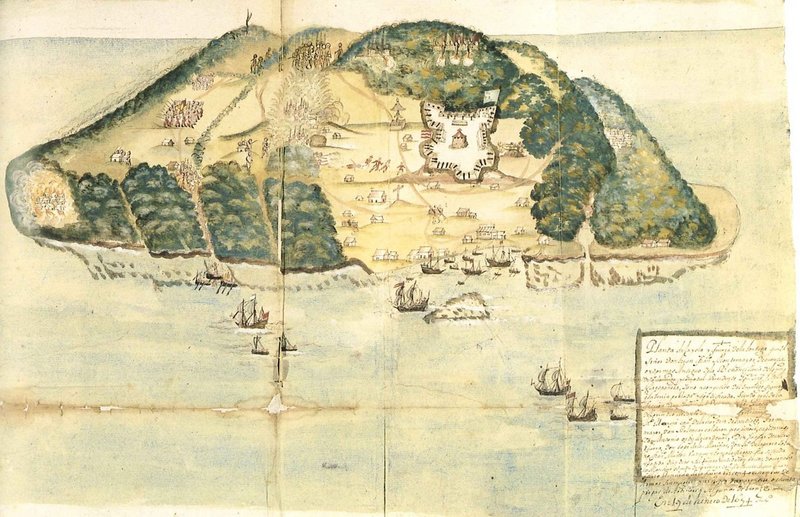
Considered great buccaneers, Sir Henry Morgan and Francois L'Ollonais often launched attacks on ships from Tortuga. By 1667, Sir Henry Morgan was given the ‘letter of marque’ by Sir Thomas Modyford, the Governor of Jamaica, that licenced him for rampant attack and siege of Spanish vessels. Tortuga was fortified to became a stronghold for all Caribbean pirates and served as neutral ground. The pirates going on raids always had Tortuga to come back to, to get drunk, to get bawdy and to store their loot.
The brainchild behind raids were essentially the colonial powers of France, later joined by England and Dutch, fighting against Spain and Portugal for dominance in the Atlantic and Indian Oceans. The privateers were, after all, the puppets of the colonial powers and profiting from the wars waged amongst these powers for monopoly. Ironically, this temporary opportunistic patronage of privateers came back to bite the hand as many buccaneers turned on them post the peace treaty between nations. Every ship, port or plantation thereafter was a fair game.

Tourism – Tortuga, now is a part of Haiti, peaceful and beautiful for great one-day trips. Boat rides, snorkelling and, of course, searching for the hidden treasures in the caves are popular things to do. The island is well preserved as there are no hotels or other infrastructure allowing travellers to stay more than a day.
3. Port Royal
Port Royal – the most wicked and sinful place on the earth. The place came about by the constant wars between European nations. The contention was for Jamaica; first occupied by the Spanish, then came the English using the Port royal as a strategic town for access to Jamaica and the proximity to maritime routes. During the English rule, several attempts to take over Jamaica were finally answered by Governor Edward D'Oley by inviting the French and English privateers or Brethren of the Coast for safe refuge in Port Royal. In return, the Brethren had to provide protection against invasions of Spain and French. It was in Port Royal; the privateer Captain Henry Morgan initiated his famous attack on the city of Portobello, he later went on to become the Governor of Port Royal. The town became a congregation ground for pirates from all over the Caribbean: wicked deals were struck, alliances were formed, invasions were planned by privateers and English alike.

Pirates' arrival and unaccounted wealth brought about debauchery, prostitution, degeneration, diseases and all excesses. Port Royal’s infamy catapulted around the world and quickly caught the fortune hunters' attention for the wealth it was generating. Brothels, taverns dominated the port for women and wine. English, French gentry were thriving upon sugar plantations by exploiting slaves. And slaves were being brought in by hundreds of pirates as they saw it as a lucrative business. The ruinous ways were growing by leaps and bounds, accumulating cursed wealth and loose morals that it can be said the town did not see the comeuppance coming when nature took over and drowned the town with a massive earthquake followed by a tsunami in 1692, taking down the buildings and people of the port.
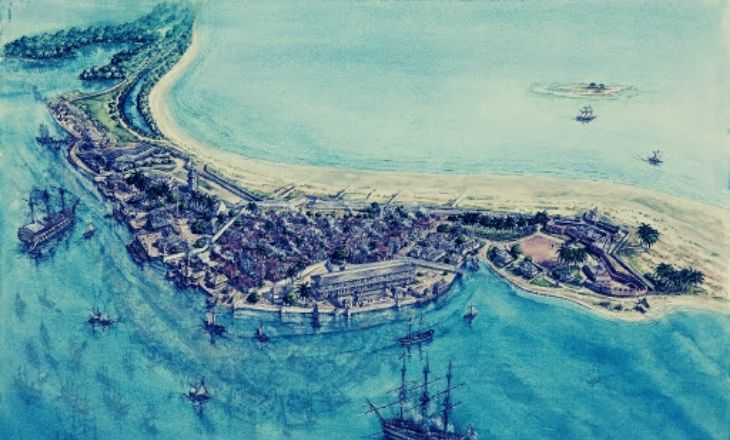
Although pirates still stopped by after the devastation for few more decades. Blackbeard (Edward Thatch), Charles Vane, Calico Jack, Mary Read and Anne Bonny were some of the notorious pirates calling on the Port Royal. Charles Vane and Calico Jack, and many more were eventually hanged to death in Gallows Point as an aftermath of anti-piracy laws due to the intolerance of pirates and their ways by the upright townsmen. The accosted pirates from Port Royal were simultaneously developing a stronghold for themselves in New Providence, Nassau.
Today the 17th-century infamous town lies underwater, and the remaining is in a state of disrepair with not much importance economically or politically.
Pirates of the Caribbean is loosely based on Port Royal’s history, although far removed from reality.
4. Pirate Coast (Ras Al Khaimah)
Pirate Coast – was an area between modern-day Qatar to Oman in the Gulf of Persia, dominated by the Al Qasimi tribe who rule the emirates of Sharjah and Ras Al Khaimah today. Privateers, pirates, smugglers have for centuries raided the Arab, Persian, Portuguese and British merchant ships carrying precious Indian and Asian Cargo.
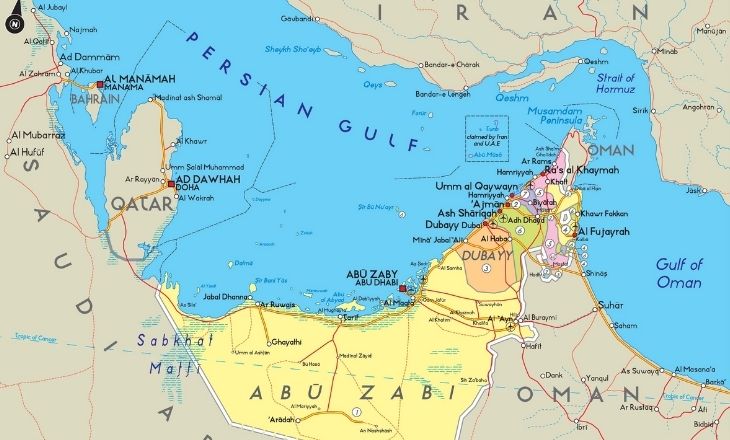
European piracy was prevalent in 16th and 17th century, raiding the Indian vessels crossing the gulf of Persia. However, 18th century onwards, there was a turn of events when the inhabitants of the Gulf of Persia started heavy cutthroat raiding a large number of ships from their base at Ras al Khaimah. Some of the attacked ships were from the East India Company, some were merchant ships of other flags, some were local Arab boats, and many came from Surat in India. The Qawasim thought of these raids as the kind of traditional raiding that was normally practised in the region and expected as a social and political norm. Many engaged in piracy, possibly for living a better life other than fishing, herding, and barely managing to survive in the harsh land because back then, the discovery of oil was not yet made. The stronghold of the tribe chiefs was Ras Al Khaimah; the Arab raiders or “Jawasmi” were considered fanatics taking delight in murders.
The British undertook a massive expedition to irradiate the piracy from Pirate Coast because their ships' constant plundering disrupted the British trade, which they carried out by invading and colonizing India and other Asian countries. The British thought to intervene in stabilizing the tribes from the gulf as there was no uniform and effective political leadership. Of course, the noble act was to further their imperial influence. A peace treaty was signed between the Al Qasimi tribe chiefs and the British, but the latter was on shaky grounds as far as their ambition to control the Gulf was concerned.
During the 18th century, the most notorious pirate known to be ruthless in the Persian Gulf was Rahmah ibn Jabir al-Jalahimah. An English author deemed him to be tolerant probably because the pirate assisted the British to wage war against Al-Qasimi of Ras Al Khaimah. Rahmah ibn Jabir al-Jalahimah went on to rule Qatar for a short while because of his strategic alliances, first with Saudis and then leaving them and joining Muscat rulers. Both islands have one person in common - the Haitian-born pirate, privateer, slaver, and smuggler, Jean Lafitte (c.1780–c. 1826). Barataria Bay, in the early 19th century, was the base of pirates, privateers, and smugglers led by Jean Lafitte and his brother Pierre. They ran an underworld gang that provided about one-tenth of the employment in New Orleans around 1807. The Lafittes’ pirate attacks were mainly on Spanish vessels in the Gulf of Mexico. Lafitte earned a pardon by the government for defending the city against the British attack in the War of 1812. Once again, an outlaw, Lafitte, developed Galveston Island, Texas, as another smuggling base. Lafittes’ claimed that these raids were legitimate privateering and held letters of marque to prove it but a few years later acknowledged that he did not have a valid commission. Despite a law prohibiting the import of slaves into any port in the United States, they secretly operated trading of slaves through their stronghold. In 1821, the authorities determined to shut down the highly profitable operations on Galveston Island. Lafitte knew the game was up and agreed to dismantle his organization. Naval officers watched as Lafitte set fire to his headquarters, and the next day, his ship was gone. But he then started operated out of Cuba until Cuba banned all forms of sea raiding in 1822. Ladrones Islands - meaning thieves in Spanish and present-day Wanshan Archipelago, which includes Hong Kong and the Leizhou Peninsula, became pirate hotbeds in the South China Sea. During the period of the imperial Chinese Ming dynasty (1368–1644), foreign trade was prohibited, which led to smuggling and only encouraged piracy. Nations such as China, Japan, Vietnam resorted to a black market, and, as each side attempted to suppress its own smugglers, each side overlooked, and even encouraged, smuggling from the other side. Chinese imperial dynasty of the Manchus was successful in suppressing the pirates brief before piracy re-emerged in the 1760s, largely in the islands around the mouth of the Canton River, including future Hong Kong. These islands were called the Ladrones, meaning robbers or highwaymen, accurately so named by the Portuguese. There was also a strong measure of cruelty among Chinese pirates and a penchant for beheading. Western captive, John Turner, captured and held by Ching Yih, reported inhuman crimes and tortures for the captured. After a defeat in Vietnam, Chinese pirates escaped back to China. Rather than competing with each other, seven pirate chiefs in July 1805 formed a confederation by signing an agreement to co-operate. Chinese pirates were divided into six fleets, and each fleet had its own coloured flags – Red, Black, White, Green, Blue and Yellow. A succession of capable pirate leaders commanded the pirates of the south China coast, the first being the leader of the confederation, Cheng I, operated from the Leizhou Peninsula in Guangdong and throughout the South China Sea in the late 1700s. Cheng I led the Red flag fleet of 200 junks and 20,000 to 40,000 men, which swelled to 600 junks by 1807. His wife, Ching Shi – inherited the fleet after his death and ultimately doubled the fleet and the pirate staff. When Europeans set up empires in the 16th and 17th centuries, the situation worsened. The seas and channels of china and Southeast Asia were well established. The Europeans acted against these powerful pirates and by the 1860s in coalition with Chinese navy had stamped them out. Anjediva (modern Anjadip) Island - is an Indian island in the Arabian Sea that served as a base for Timoji, a pirate and a privateer of the Vijayanagara Empire and later an aide to the Portuguese Empire in their conquest of Goa. He benefited from the warring kingdoms of the Vijayanagara Empire and the Muslim Bahmani Sultanate as continuous supplies were needed. Raided Persian horse shipments for the king of Honavar and attacked Kerala merchant fleets for pepper cargo. He had amassed over two thousand mercenaries and a fleet of fourteen ships under his command. In 1505, He gained Viceroy Dom Francisco de Almeida's trust by providing key intelligence on the next siege by Calicut forces. In 1510, Timoji persuading the new governor Afonso de Albuquerque to stall his sail for the next conquests in the Red Sea instead encouraged him to capture Goa instead and expected the region would be handed over to him after the conquest. The idea to invade Goa was to gain support from Hindu chiefs who implored Timoji to remove the Muslim rule of Adil Shah as Hindus were exploited by his subjects. Albuquerque appointed Timoji the Aguazil for Goa but dissatisfied by his lack of compliance; he was then stripped of his power. Timoji resorted to his previous pirate activities and was eventually captured after one of his raids; he later died of opium poisoning. NORTH CAROLIN A MARI TIME MUSEUM, Beaufort, North Carolina See artefacts from Blackbeard's flagship, Queen Anne's Revenge, which exhibits the history of life at sea and a display of wooden boats. PIRATES OF NASSAU MUSEUM, Nassau, Bahamas A museum designed to clear up myths about pirates with tours of nearby pirate sites.
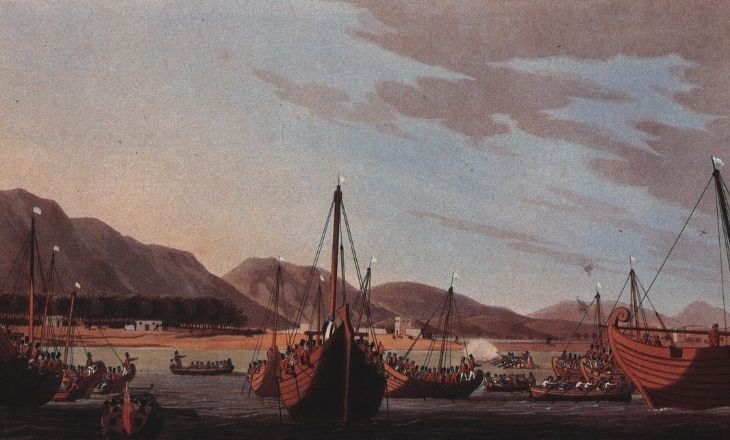
5. Barataria Bay & Galveston Island


6. Leizhou Peninsula in Guangdong

7. Anjediva Island
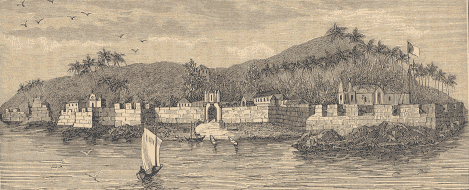
-1601299091.jpeg)
Places to visit












